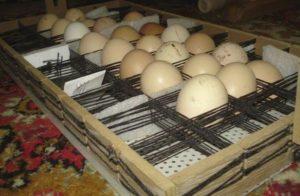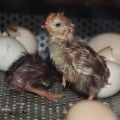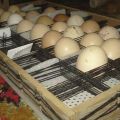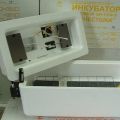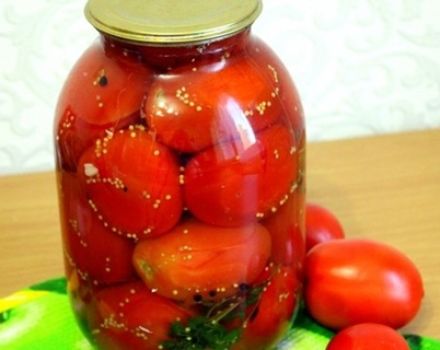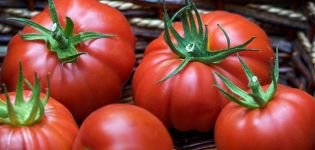How to store hatching eggs before setting in the incubator, room requirements and timing
A memo on the rules for storing hatching eggs before placing them in the incubator is useful for beginners. A short cheat sheet takes into account all the features of the selection of eggs and their storage. Home-bred chicks are cheaper. The cost of an incubator pays off quickly. To achieve 100% hatchability, eggs must be properly collected and stored prior to incubation.
How to select eggs for incubation?
Absolutely healthy hens are transferred to a separate enclosure. Their eggs will be laid in the incubator. Sexually mature hens aged 7-9 months to 2 years are suitable for breeding. Breeds are meat and meaty from 8 or 9 months, egg - from 7, because in the former puberty occurs later.
Selected females are provided with proper feeding, consisting only of natural products:
- main feed grain;
- additives - chopped hay, cabbage, carrots.
If there are no vegetables, "Tetravit" is added to the chicken porridge. It contains all the vitamins necessary for the life of a laying hen:
- A;
- F;
- E;
- D3
Supplements affecting egg production (intensity) are excluded from the diet of female producers. Eggs are first assessed visually.
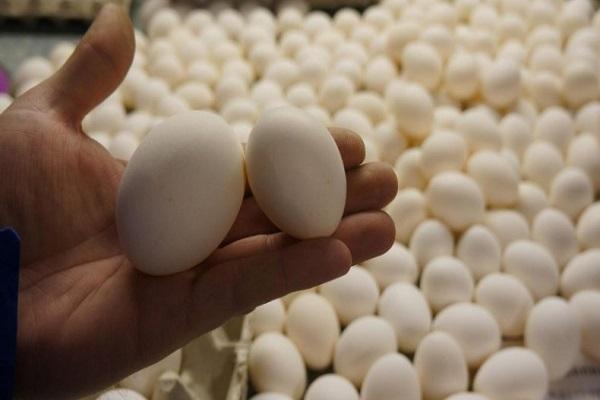
Their weight should not exceed 65 g. Small specimens are also not suitable. Selection criteria for breeding material:
- clean, smooth shell without cracks, patterns, sagging;
- average size and weight (55-65 g);
- the correct shape, the presence of a blunt and sharp tip, a smooth transition between them.
The main condition is that fertilized specimens with one yolk are needed. To do this, there should be 1 male in the hen house for every 8 females. The quality of the selected material is determined using an ovoscope. Good specimens are considered to be those with:
- yolk in the center;
- the size of the air chamber is 2 mm, it is located at the blunt end right in the middle.
The length of daylight hours is not increased in order not to stimulate the layers. Eggs from intensive laying hens are not suitable for breeding. From seed size larger than average, low hatchability. The chickens that emerge from them are sick.
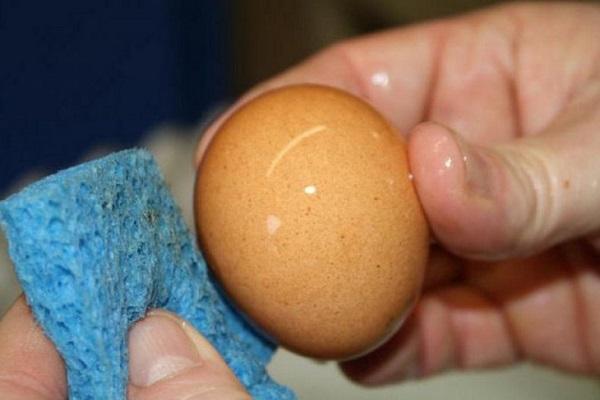
When to take eggs from the nest?
The raw materials for the incubator begin to be collected in March. They do this several times a day, observing a certain interval:
- after 2-3 hours in a warm room (in summer);
- after 1 hour in a cold room (cold season).
With this approach, the number of serious shell defects, cracks, scratches is minimal. Chickens usually lay in the morning and in the morning.
If nests are rarely inspected, the hen stops laying and sits in the nest to incubate chicks.
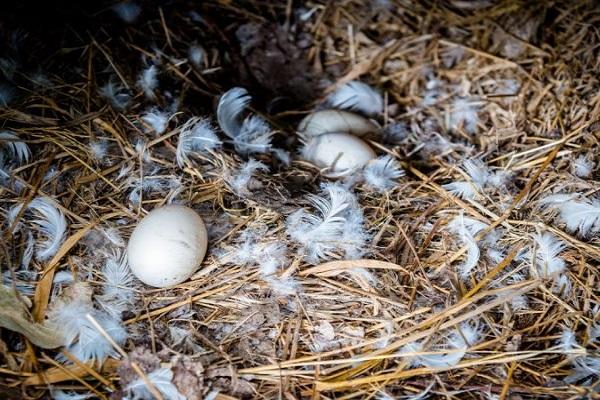
Egg storage technology before incubation
For storage, take cardboard or plastic cells. The collected seed material is placed in one layer in them. Place with the sharp end down. Hold the ends with two fingers. The shell is often not washed or wiped. It is covered with a thin over-shell film (cuticle) that protects the fertilized embryo from infection.
Dirty specimens are discarded, on the blunt end of quality ones they are stamped with a collection date. Do this with a simple pencil. When choosing a storage method, experienced poultry farmers prefer plastic cells. Cardboard absorbs moisture, which causes mold to develop on it.
The fungus that gets on the shell can harm the embryos.
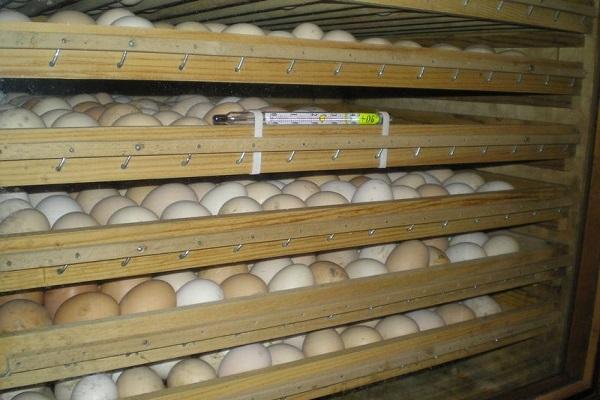
Storage space requirements
The material selected for the incubator is stored in a special way. The room maintains a certain temperature and humidity. Under optimal conditions, seed aging is slowed down. To create the desired microclimate, the warehouse is equipped with a reliable ventilation system.
Humidity
High humidity is maintained in the room; a psychrometer is purchased to control it. The range of 75-80% is considered the norm. The drier the air, the faster the egg ages, it has rapid weight loss.
| Moisture percentage | Weight loss (%) for 10 days of storage |
| 80 | 0,7 |
| 60 | 2,4 |
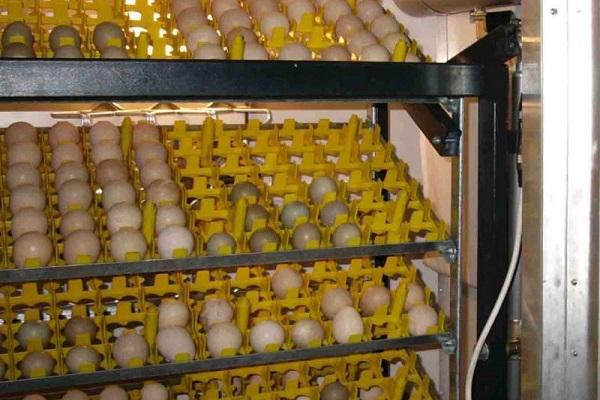
Temperature
Install 2 thermometers in the room, take outdoor ones. A large error in the readings indicates a malfunction of one of them. The optimum temperature for storing chicken eggs before setting them in the incubator is 8-16 ° C. Embryos die if it drops below 5 ° C.
Storage temperature recommendations in relation to shelf life are given in the table.
| Shelf life in days | Recommended air temperature |
| 2-3 | 14-16 ° C |
| 4-6 | 2 days - 11-13.5 ° C |
| the remaining days - 14-15 ° C |

Storage periods
The longer the egg is stored, the less likely the young are hatched. The percentage dependence is shown in the table.
| Term in days | Number of young animals (%) |
| 5 | 90 |
| 10 | 80 |
| 15 | 70 |
| 20 | 24 |
| 25 | 15 |
Guaranteed
Under optimal conditions, eggs can be stored for 6 days without compromising the quality of future offspring. In fertilized specimens, the yolk and protein dry out daily. Liquid leaves them. A decrease in the volume of the nutrient medium negatively affects the development of the embryo.
The earlier the egg enters the incubator, the higher the hatchability percentage.

Maximum storage time
To obtain a large batch of chickens, collecting the required number of eggs is delayed. Poultry farmers use certain methods that allow them to preserve the life of embryos, slow down the aging process:
- periodic heating of seed material;
- turning eggs by 45 ° every 3 hours for horizontal storage, from a sharp end to a blunt end for vertical storage.
Rotating the seed increases the hatchability rate of the chicks, this allows 2-3 days to be added to the shelf life. When turned over, the yolk does not dry out, the protein strands holding it in the center do not come off. The maximum collection period for hatching eggs should not exceed 12 days.
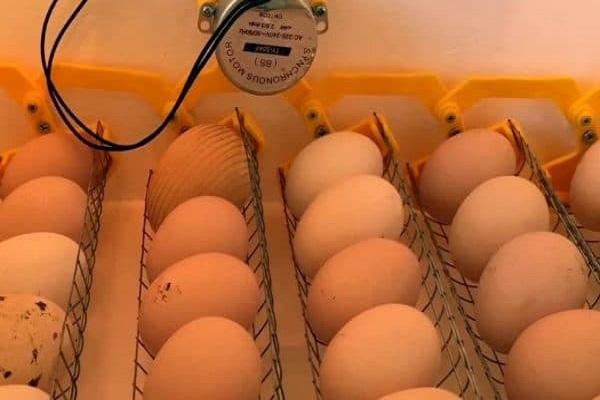
Consequences of wrong conditions
The first mistake that novice poultry farmers make is the selection of poor quality seed material. Eggs of any size are placed in the incubator. About 38% of the offspring bred from small specimens (weight less than 52 g) die. Chickens do not hatch from large eggs or appear, but with serious pathologies.
The second mistake is the absence of an ovoscope. By limiting control to visual inspection, the breeder runs the risk of missing serious defects:
- small cracks and growths on the shell;
- deviation in the size of the air chamber;
- displacement of the yolk, its drying to the shell;
- not notice blood clots, the presence of a second yolk.
The quality of incubation is influenced by the correct selection of producers, their age and number. Fertilization of eggs depends on them. An important point is the storage conditions and its duration. With inappropriate temperature and humidity conditions and long-term storage of eggs, the percentage of hatchability is low, the chickens appear weakened, with developmental defects.

The quality of the seed is badly affected by sudden fluctuations in room temperature. Because of them, condensation forms on the shell. Moisture particles are a favorable environment for the development of pathogenic microorganisms. They can infect the embryo.
The aging rate of eggs increases with poor ventilation, when the room temperature and humidity are controlled by opening windows or doors. Strong air movement (draft) accelerates the evaporation of moisture from the egg white and yolk.
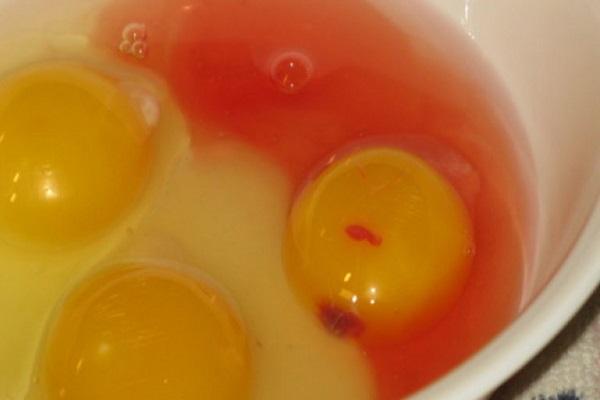
Breeding your chicks is not easy. Buying an incubator is only part of the tricky process. It will take a lot of time to select breeding chickens and roosters, collect hatching eggs, and create conditions for their storage. A brood of healthy chicks will compensate for the time and effort spent.
